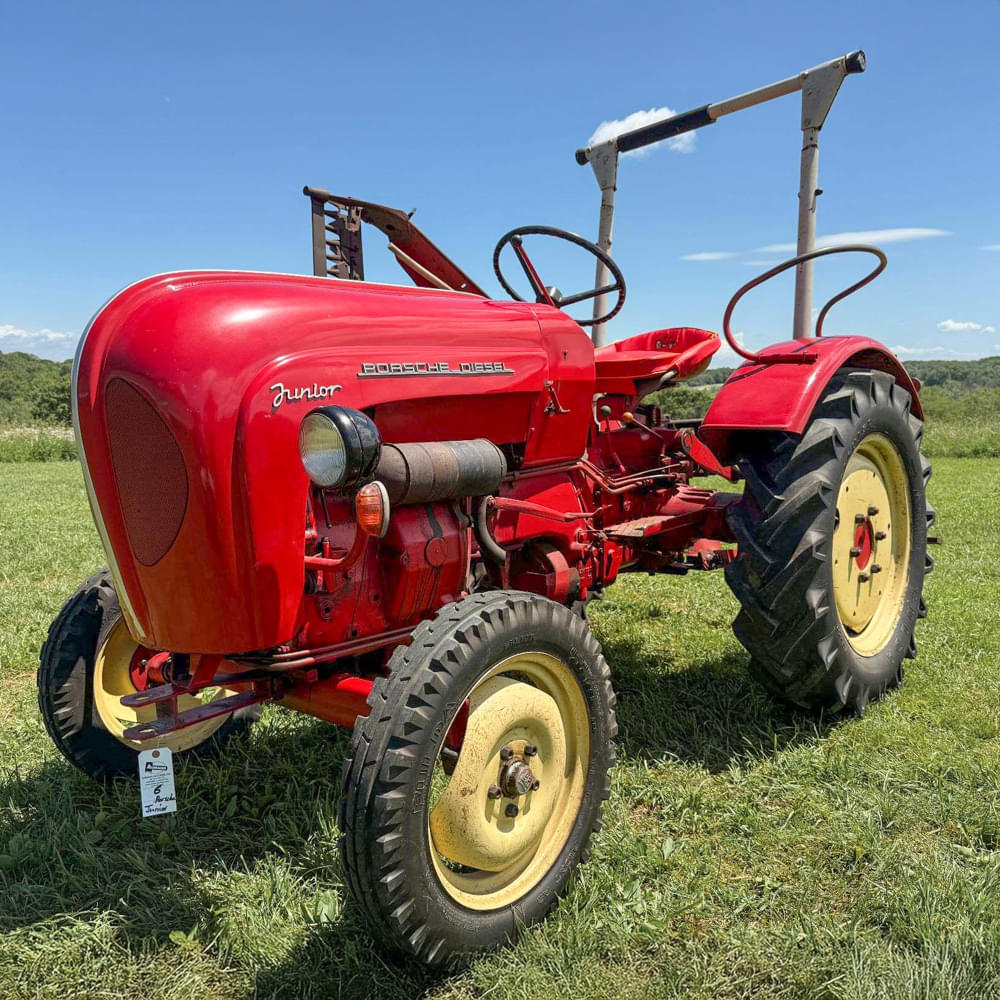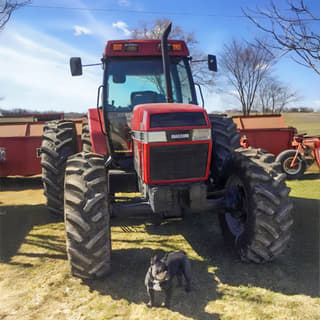INTERESTING IRON
Porsche Junior: The slowest Porsche in the world…
Ryan Roossinck
August 26, 2025
I’ll admit it—I’ve got a soft spot for this one. I’ve been a Porsche nut for years. As a kid, I drooled over them. My daily driver even has an engine Porsche helped design. Heck, one of our cats is named after the brand!
So 10 or 15 years ago, when I learned that Porsche built tractors back in the ’50s and ’60s, my inner Porsche nerd was thrilled. I don’t care if they’ll only do 12mph. It’s still a Porsche and I think they’re still really cool!
We’ve seen a few of these tractors pop up on Tractor Zoom before, but the timing was never right to write about them. Now, though? We’ve got three—a Porsche Junior, a Standard, and an S218 Vineyard model—selling on September 1, 2025. From where I’m sitting, that’s a perfect excuse to dig in. Auf geht’s…let’s get to it!
Humble beginnings…
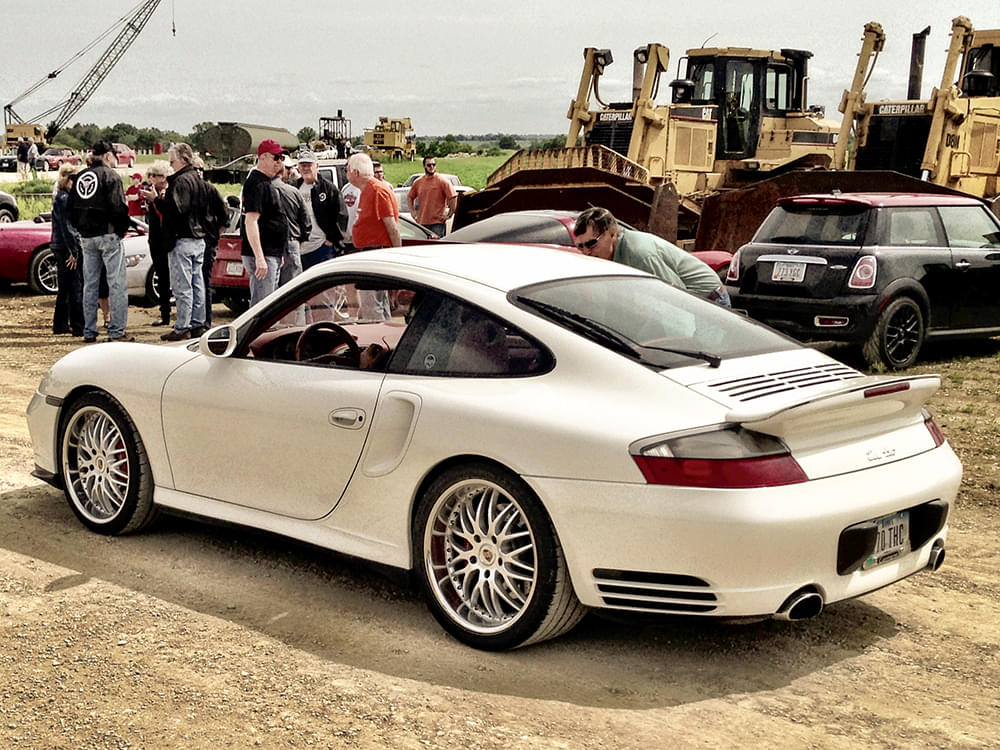
The brains behind both the cars and tractors? Ferdinand Porsche—a brilliant engineer born in Bohemia (now the Czech Republic) in 1875. Early on, he worked for several automakers, and fun fact: he designed the first gas-electric hybrid car way back in 1898! After stints with Lohner and Daimler (Mercedes-Benz), Porsche struck out on his own in 1931, founding an engineering firm in Stuttgart with his son Ferry.
Not long after, the German government launched a program to make cars and tractors more accessible to its people. Porsche was tapped to design both. He came up with a practical but elegant design for the tractor—the Volks-Schlepper, or “People’s Tractor”—powered by an air-cooled v-twin engine and hydraulic clutch to make it easy to drive. Three prototypes were built and tested successfully. However, before they could get them rolling, war loomed in the distance and priorities shifted. Sadly, the project had to go on the shelf.
The car project…well, that one you’re probably already familiar with.
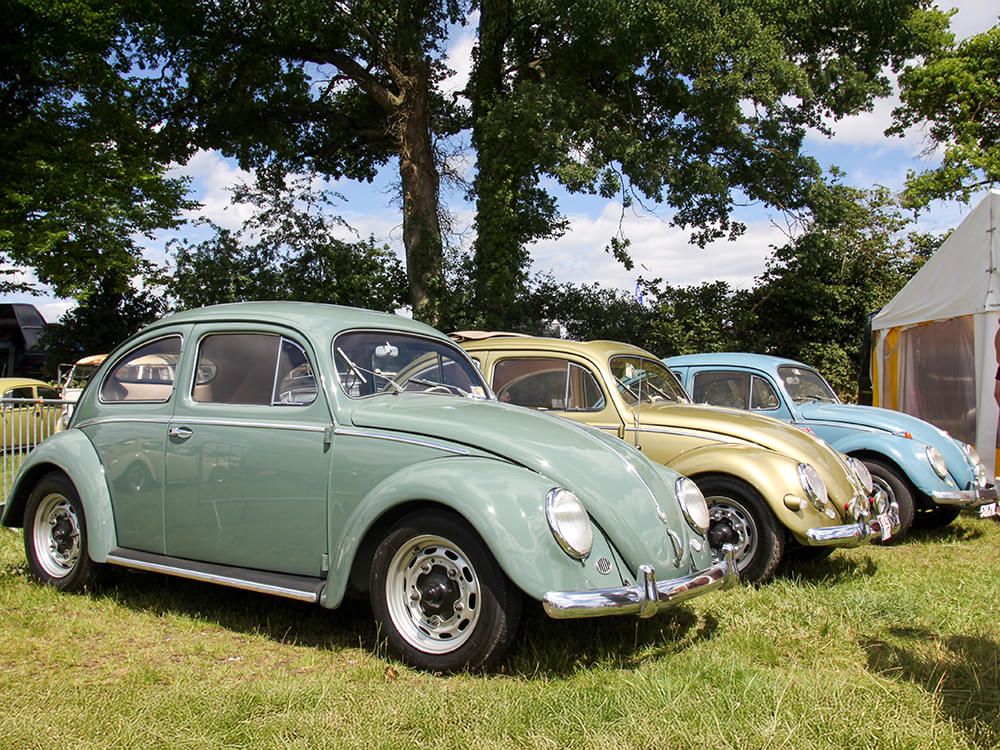
Post-War Problems
The war may have stopped Porsche’s tractor dreams, but it didn’t stop his mind from turning. During the early 1940s, Ferdinand developed a clever modular engine system—direct-injected air-cooled diesel design based on 50 cubic-inch cylinders. He called it the Type 313. Together, he and his son Ferry refined it into something truly versatile: one core design, multiple configurations, from single-cylinder Juniors to four-cylinder Masters. This concept became the backbone of every Porsche tractor built later on.
The trouble was, when the war ended, Germany was a mess. The land was wrecked, factories were gone, and people were starving. The Allied authorities allowed some industries to restart, including tractor production—but only for companies already building them before the war. That rule effectively boxed Porsche out of the business. They had great designs, but no production history. To make matters worse, the company was barely hanging on after years of disruption. Ferry Porsche managed to land a few car projects, but the future looked grim.
Better days ahead…
The glimmer of hope came when Ferdinand made a deal with two established companies—Allgaier in Germany and Hofherr Schrantz in Austria. Both would license the Porsche System engine design and build the tractors. From what I can tell, most of the production was handled by Allgaier, and that began in 1950. The designs were fairly simple but they were pretty effective, too. It wasn’t a smooth road, but it was the start of Porsche tractors as we know them, and it kept the lights at the headquarters in Stuttgart.
Sadly, Ferdinand Porsche never actually got to see his tractor designs ever take shape. He suffered a stroke sometime the last few weeks of 1950, and never fully recovered. He passed away January 30, 1951.
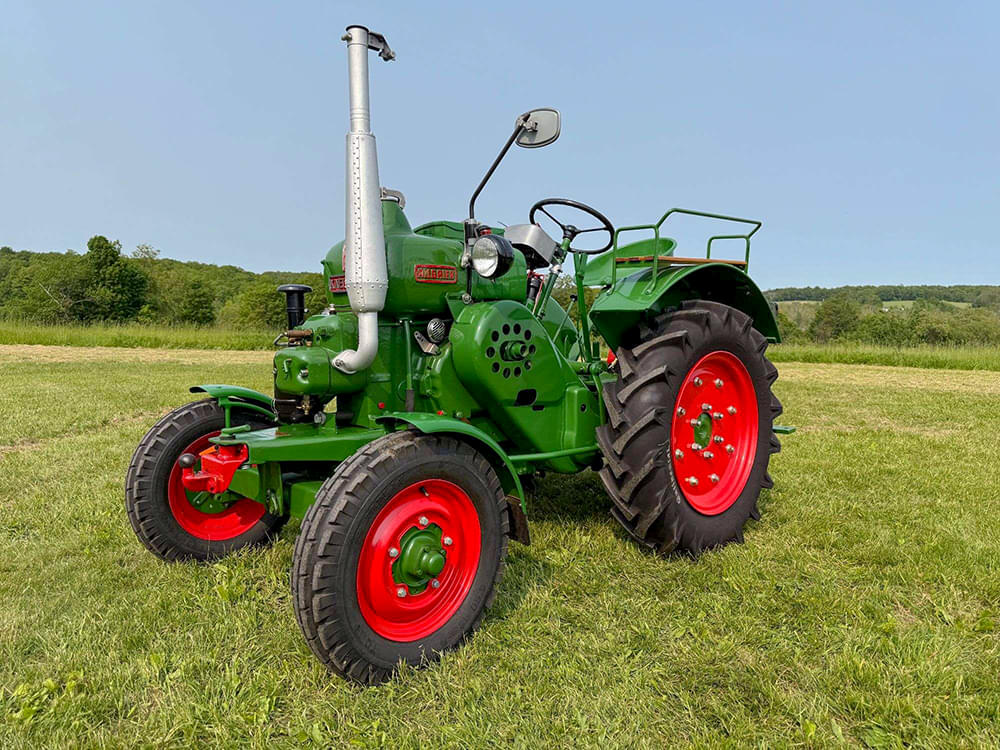
Changing of the guard…
For a few years, Allgaier and Porsche pushed the designs forward together. But by 1955, Allgaier was feeling the squeeze of an ever-tightening market and chose to bow out. In 1956, an industrial firm called Mannesmann stepped in. With some help from Porsche’s team in Stuttgart, they launched Porsche-Diesel, bought an old blimp factory in Friedrichshafen, and re-tooled it for building upwards of 16,000 tractors per year!
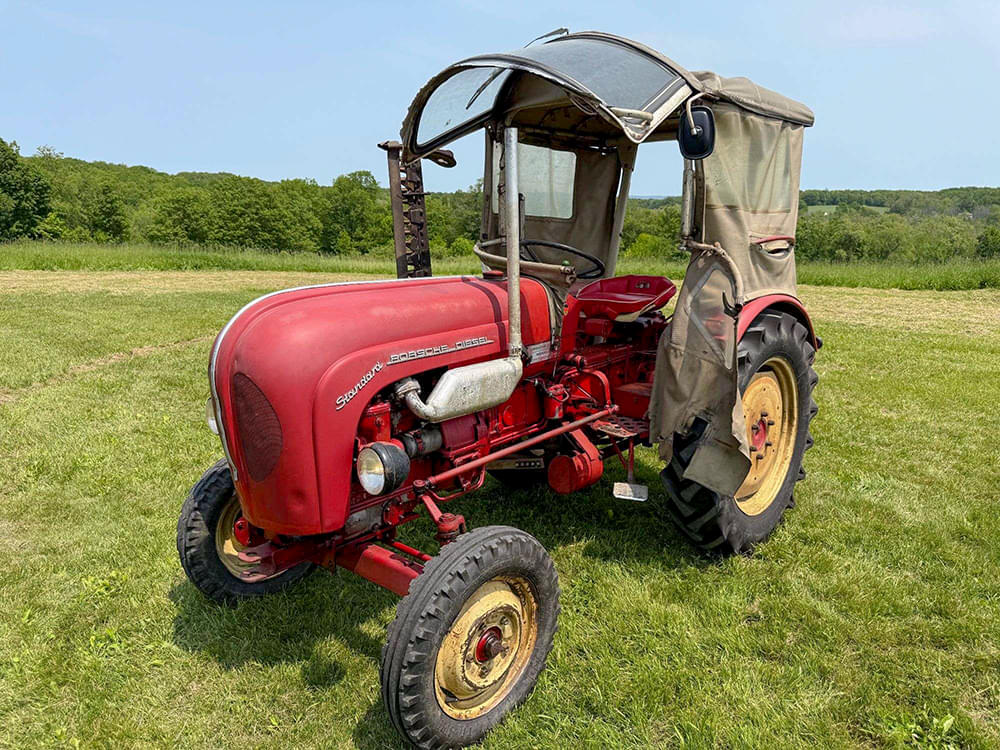
Soon after, Porsche-Diesel began phasing out Allgaier model names in favor of their own: the Junior (14 hp), Standard (25 hp), Super (38 hp), and Master (50 hp). Sales were strong in Europe, and by 1959 they entered North America through a distributor in Easton, PA. Estimates indicate that they moved about 1,000 tractors here—likely Juniors and Masters if I had to guess. Their features and size made them a great option for small farms and vineyards.
Production rides into the sunset…
Porsche Diesel tractors had a solid run. With over 120,000 built in about seven years, I’d call that a success. Still, the market was crowded and margins kept shrinking. With global players like Massey-Ferguson, Fendt, and Ford gaining ground—not to mention the U.S. brands—Porsche decided its future was better in cars and motorsports.
By mid-1963, they saw the writing on the wall. Porsche struck a deal with Renault to supply parts until inventory ran out, and shortly after, Porsche Diesel shut down.
As for the best seller? No hard numbers, but the sheer number of auction results suggest the Junior takes the crown. They may be the slowest Porsches ever—but to me, they’re some of the coolest, too.
So anyway, what about this one selling on Labor Day?
The Porsche Junior that’s available right now…
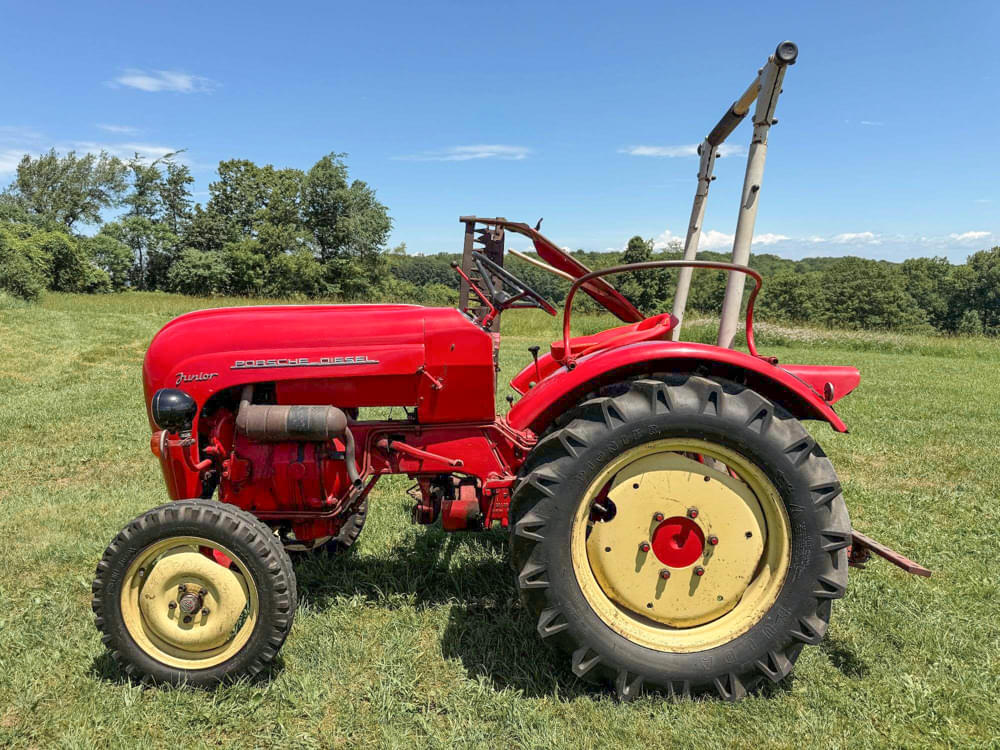
This Junior is one of three Porsches selling on Aumann Vintage Power’s collection auction for Jim MacFadden in New York. Jim’s a passionate collector with a soft spot for German iron. He travels to Germany every year hunting for tractors you rarely see in the States.
When I asked him about this Junior, he said, “Ryan, I’m convinced this is probably the nicest original left on the planet!” Hard to argue with that. Jim bought it directly from the original owners, where it spent its life on a small estate near Munich. Original paint, straight tin—and the mower might even be original, too. Porsche offered a few factory implements, and I wouldn’t be surprised if this is one of them.
Why does originality matter? Because most Juniors over here have been fully restored. That’s fine—some are spectacular—but originals are special. Part of me hopes this one stays just the way it is.
What are they worth?
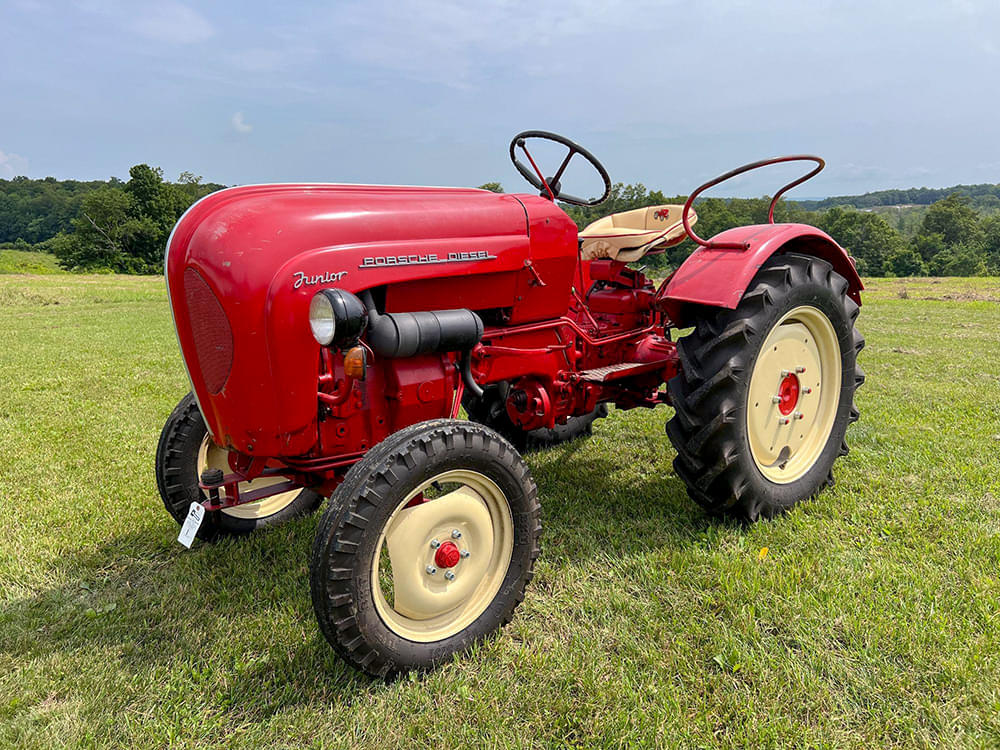
Values for Porsche tractors have risen steadily over the past few years, thanks largely to car collectors looking for something unique to park next to their 911. As such, the places where they change hands most frequently is on high-end car collector auction sites. Over the past few years, restored Juniors tend to change hands for somewhere in the $32-35K range depending on the quality of the work.
Original examples, though? Those can fetch even more.
Take the one pictured above. Jim MacFadden sold it in 2023 for $40,000. It was highly original and in great shape. The one he’s selling this year is even nicer—fewer scratches and almost no paint wear. Even in a softer economy, I wouldn’t be shocked if it matches that price…or beats it.
Wrapping up…
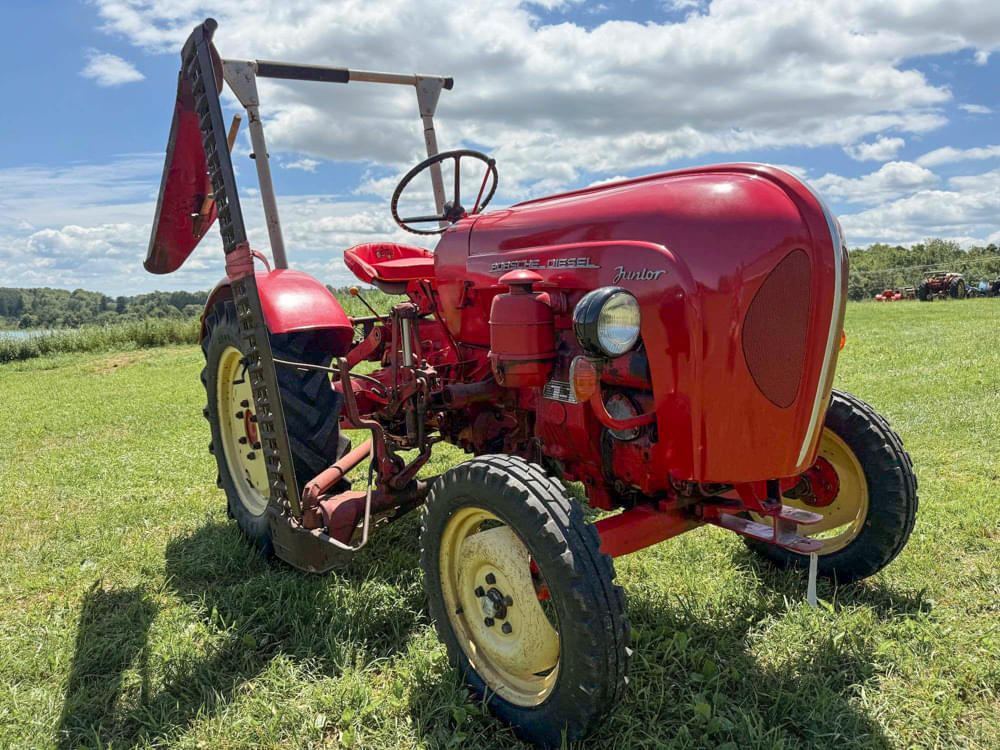
So, if you’ve ever wanted a Porsche in the garage but don’t have $150K to spend on a 911, this might be your chance. It’s not fast, it’s not flashy, but it’s one of the most interesting pieces of Porsche history you can own—and it’ll still cut the grass if you want it to! Here’s the link to Porsche Diesel tractors listed on Tractor Zoom one more time. Check ’em out!
Porsche tractor listings on Tractor Zoom
Until next time, make it a great week!

